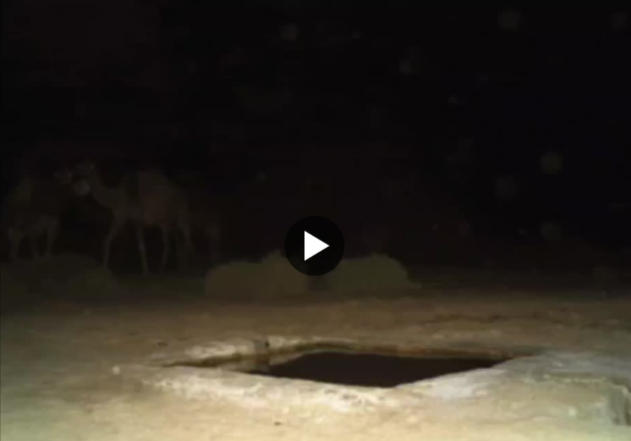To understand the damage domestic camels are causing to wildlife habitat in Iran. In less than 17 minutes, a whole water trough and its supply can be emptied. Remarkably, some camels remain inside the waterpoint, waiting in hope that water will return.
What happens to natural springs?
Desert springs often have very low inflow rates and need time to refill. While the reservoir refills, many wild animals are left thirsty; they either search for alternate sources or must wait until water accumulates again.
The next night, wild animals that find an empty waterpoint often leave thirsty.
Rangers on patrol must detect and address these shortages quickly which shows how crucial adequate staffing and regular patrols are.
Beyond direct water consumption, think about grazing pressure: heavy grazing by livestock reduces vegetation cover. It diminishes prey availability, one of the main threats to the prey base of the Asiatic cheetah.
Every time rangers are called to remove camels from protected areas, it also consumes their time and energy.
Importantly: the presence of domestic camels in Asiatic cheetah habitat is now considered one of the major threats to the species. This adds urgency to finding long-term, rights-aware solutions.
Key point:
The sharp increase in domestic camel numbers in recent years shows that measures such as fencing waterpoints or periodically removing camels are only temporary fixes. This problem requires coordinated, high-level, inter-agency action and negotiation, not just isolated local responses.



